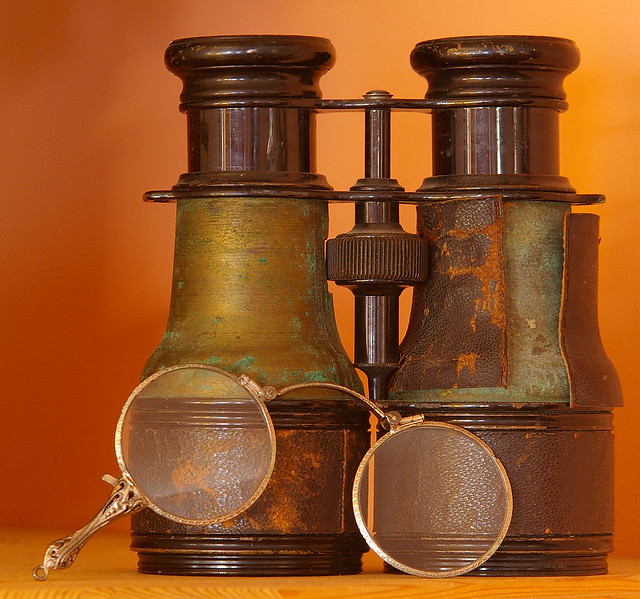 |
| "Seeing the Past" photo by Charles Kaiser |
Nate, over at The Drinking Bird, wrote a fascinating blog post about the Orange-billed Nightingale-thrush. This Central American bird showed up South Dakota, of all places. Not only is the bird well out of its normal summer range in Tamaulipas, Mexico and 1,435 miles north of it’s previous Texas record, it is not even a migratory species. Perhaps even more remarkable is that someone found it in Spearfish Canyon. Well, by now, possibly thousands of people have found it. This is a little less surprising, given that, as Nate has pointed out, the intrepid discoverer, Eric Ripma, is also a blogger!
Way back in the Twentieth Century, word of such a finding was spread by telephone. Our nature group, the Webster Groves Nature Study Society, maintained a “hotline” for many years for this purpose. A birder who discovered an uncommon or rare species called the person at the beginning of the chain, who called the next, and so on. As long as people were home (no cell phones), twenty or so people were informed within 6-24 hours of the sighting. If the first person in the chain doubted the claim, his or her dialing finger remained idle. Assuming that the hotline was activated, the first group of 6 or 12 arrived, relying on binoculars for the most part. Only one field guide—Peterson—was easily available, and it didn’t list rare visitors from other climes. By 1983, National Geographic published its more comprehensive field guide. The average income of birders began to climb, the price of spotting scopes began to fall, and optics improved by leaps and bounds.
Enter the digital age! List serves have replaced hotlines, informing vastly more birders in less time. Excited birders on the scene of a rare sighting send up a Tweet from cell phone without leaving the bird! When a text message isn’t enough, why not upload your digiscoped photo? Of course, it’s not just the sending, it’s the receiving too. Subscribers get a ring tone wherever they are—at work, or in rush hour traffic. I don’t subscribe to national rare birding hotlines, but I found out about the Orange-billed Nightingale Thrush through a photo posted by Christopher Taylor (a friend I’ve never met) on Facebook.
Do we still admire birding records of the past as 21st Century birding skills sweep them away? Is the ability to spot and identify a bird becoming less important? Maybe all I need to do is follow a Google Map posted by a birder, and wait for the experts to point out the bird. I ask you, fellow birders, is the famed picnic table of Patagonia now good for nothing but picnics?
I asked my nephew Sean for an analogy from sports. No sport seems more obsessed with record keeping than baseball, and Sean is the Sultan of Stats—a walking Wikipedia! He pointed me toward the “Dead Ball Era.” Just to give you an idea of how baseball was played at the time (1900-1919), Frank “Home Run” Baker earned his nickname by hitting 2 home runs in the world series of 1911. That’s right—both in the same series. When Frank tore the cover off the ball in 1911, the ball was worn, weak, dented, brown, and flat before he smashed it. Now baseballs are lively and replaced ever few minutes so that they remain a nice, visible white. In every type of sporting equipment, quality has taken a quantum leap since the days of the Gas House Gang.
Actually, I’m confident that birding skill is alive and well in the 21st Century. After all, it was Ripma’s skill that allowed him to find the bird. Just as every player from Stan the Man to Hammerin’ Hank would have used modern equipment if it had been available, I have no doubt that Ted Parker and Phoebe Snetsinger would have Twitter followers if they were still birding today.
No comments:
Post a Comment